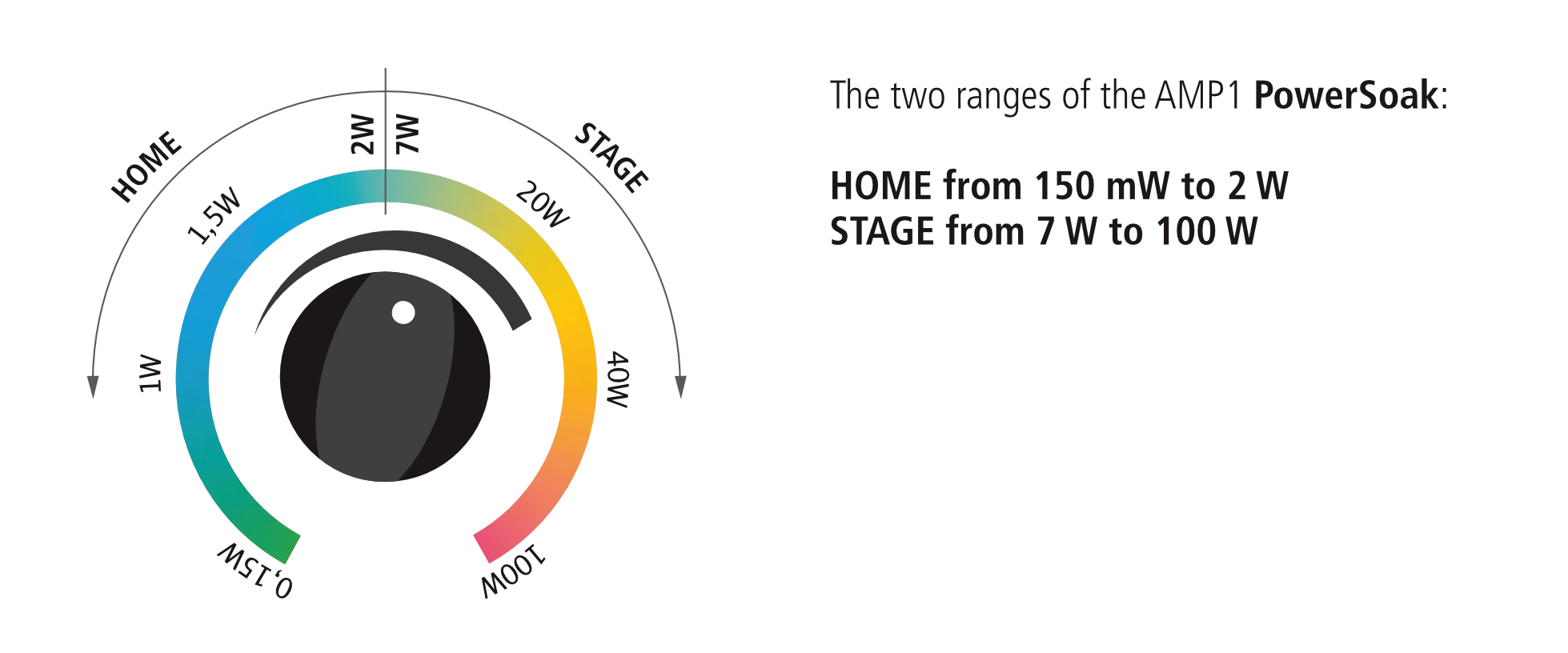The AMP1 Power Soak - functionality and areas of application
The AMP1 has an integrated Power Soak function. Since not everyone needs this function, and since there is no more space for additional controllers on the AMP1 itself, this feature can only be controlled via an external controller. In addition to the REMOTE1, this is also possible in connection with the MIDI1 adapter interface via a MIDI controller from another manufacturer, provided that this can send MIDI control change command 30.
How does the AMP1's Power Soak work?
A classic power soak converts the power present at the loudspeaker output into heat via large load resistances. The more the signal is "burnt away" via the resistors, the quieter - but also "flatter" and less lively - the sound becomes.
The Power Soak in the AMP1 reduces the power of the power amplifier via the operating voltage. In this way, you can produce the sound of an overdriven power amp even at a lower volume.
The Power Soak's control path has been divided into two areas: the 100% sound-neutral "STAGE" area, and the somewhat milder-sounding "HOME" area. If you use the REMOTE1 to control the Power Soak, you will notice that the LEVEL control of the REMOTE1 automatically switches from "HOME" to "STAGE" from the middle position.

Compared to classic power soaks, this way of working has a decisive advantage: the Power Soak is completely sound-neutral in the "STAGE" range (7 watts to 100 watts/control range of the REMOTE1 potentiometer from 12 o'clock to maximum position), since there are no resistances to the natural interaction of the power amplifier and no speakers to interfere.
When does it make sense to use the Power Soak?
One hears and reads again and again that guitar amps, especially tube amps, have to be played loud in order to sound good - or conversely, that tube amps don't sound good when played softly. This rumor is widespread - but also just as wrong. We've dedicated a whole article to the subject, which you should definitely read if you want to understand when and why you should use a Power Soak - and when you shouldn't: Is it true that tube amps have to be played loud in order to sound good?
It's a sound feature!
Reading this article makes it clear that a Power Soak is less a (pure) volume feature and more a sound feature that brings the sound and feel of a wide-open tube power amp into a more “bearable” volume region. Because to reduce pure volume, you can also simply turn down the MASTER of the amp. This works particularly well with the AMP1, which is designed in such a way that the saturation and compression, which make the amp sound round and fat, unfolds even at low volumes.
The difference between MASTER and Power Soak...
... is this: when turning back the MASTER on the AMP1, the output is reduced in loudness. The Power Soak, on the other hand, reduces the maximum output power of the AMP1.
One can imagine that a 100-watt power amp set to MASTER position 5 still has a lot of headroom upwards, and therefore much less compression than a power amp reduced to 50 watts running at maximum power. The latter has to be turned up much further in order to achieve a comparable volume. Conversely, with a lower output power, you can - or must - turn up the power amp further in order to achieve the same volume as the full power mode. This drives the nanotube into saturation, and the sound changes due to the onset of power amp compression.
Playing at bedroom level...
... works with the AMP1 without the Power Soak! As mentioned above, even with a low MASTER setting, AMP1 sounds round and fat without the tube having to compress. You only need the Power Soak if you explicitly want a vintage sound with a lot of power amp compression. In this case, you can reduce the output power of the AMP1 to below 1 watt and enjoy the sound and feel of the power amp compression at room volume.